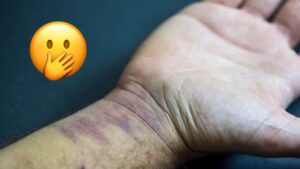 Raleigh North Carolina Carpal Tunnel Release Expert Johnny T. Nelson, MD hears this question often. If you are asking this question, you are not alone and chances are you recently had a carpal tunnel release procedure. Perhaps you had a traditional open carpal tunnel release, or perhaps you had the ultra-minimally invasive carpal tunnel release with real-time ultrasound guidance.
Raleigh North Carolina Carpal Tunnel Release Expert Johnny T. Nelson, MD hears this question often. If you are asking this question, you are not alone and chances are you recently had a carpal tunnel release procedure. Perhaps you had a traditional open carpal tunnel release, or perhaps you had the ultra-minimally invasive carpal tunnel release with real-time ultrasound guidance.
So is bruising normal?
The short answer to the question is: Yes! Bruising is simply the human body’s response to surgery.
When Dr. Johnny T. Nelson, MD performs a carpal tunnel release, the human body and the skin, bones, and ligaments in the area do not “understand” what surgery is. To these structures, surgery is seen as an injury. In response to this, it is normal for the human body to bring fluid, blood, swelling, and redness to the area and response to the surgery. This is normal.
But what is the bruising? Where does it come from?
Bruising is simply the body taking the blood and fluid from the surgery location and breaking it down in preparation for clearing it out and sending it back to your liver. Anyone that has fallen and sustained a “charley horse” or bad bruise understands this process. Right after the injury, the site overall looks quite normal except for some swelling and may be some redness. But the day after, and over the week following, bruising appears. It is common for bruising to turn different colors, often going from purple to brown to yellow. Eventually it will fade away completely, which is a sign that the body’s immune cells have eaten up and cleared away the blood cells that were left behind.
What if I have bruising on my palm and on my forearm? What if the bruising is spreading?
This is also common after carpal tunnel release surgery. It is very normal to have bruising in the palm as well as over the front of the forearm, at times even extending into the fingers or towards the elbow. This does not mean that anything is wrong. Some patients may even have bruising visible on the top of the hand or forearm. It is also normal for the bruising to start close to the site of surgery and grow in size over the days and weeks following the procedure.
Why do some patients have more bruising than others?
This is difficult to understand. Some patients do not bruise at all after carpal tunnel release. Some patients bruise more, there are many reasons for this but most remain unclear. Some patients are on blood thinners, and these patients should expect to have more bruising. Again, this does not mean that there is a problem.
You have carpal tunnel syndrome? Do you wake up at night, shaking her hands out? Do your hands fall asleep during the day when performing certain activities? If so, call 919-872-5296 to schedule an appointment with Dr. Johnny T. Nelson, MD, North Carolina Carpal Tunnel Specialist.


